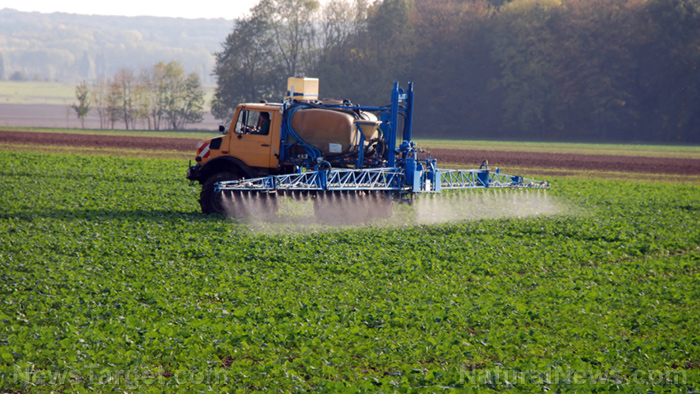Using woodchip bioreactors decreases widespread contamination of surface water
12/03/2018 / By RJ Jhonson

Modern agriculture helps keep the world well-fed, but it is also one of the greatest contributors to water pollution. Nitrates in synthetic fertilizers contaminate the ground and surface water and when ingested, cause various serious conditions. A study published in California Agriculture found that one way of remedying the problem is by using wood chip denitrification bioreactors which, according to findings, can effectively reduce the nitrate concentration in tile drainage.
Nitrogen is one of the most essential elements for maintaining life. Besides being abundant in the atmosphere, it occurs in various organic and inorganic compounds that support life, including amino acids and the nucleic acids in cells. Needless to say, both plants and animals need it for growth, development, and reproduction.
The nitrogen in the soil is far from inexhaustible, although nature has a way of replenishing it. Deficiencies in nitrogen are often remedied by adding nitrates to the soil, but the benefits of doing so come at a price. These nitrates may be carried by rainwater or irrigation into bodies of water, such as streams and rivers, or groundwater, which is often the source of drinking water. In either case, nitrates wreak havoc on the ecosystem and human health.
Unfortunately, nitrates are hard to detect without actual tests – they are odorless and colorless. Prevention of contamination by denitrification is, therefore, one of the best ways to reduce the harmful impact of nitrates on both the environment and the public.
In the published study, the authors evaluated the effects of using wood chip denitrification bioreactors to remove nitrate-nitrogen (NO3-N, a term for nitrate that counts the amount of nitrogen in the nitrate ion) from tile drain effluent in two vegetable farms. Denitrification bioreactors are systems that use biochemical processes to remove nitrogen from water using a particular medium which, in this case, is wood chip.
Other bioreactors may use different types of medium, such as cardboard, corncobs, straw, and even green waste. The researchers opted to use wood chip because of its relative affordability, ready availability, and long-lasting stability.
The bioreactors function throughout the year. Over several years of operation, the authors noted that the bioreactors successfully reduced the concentration of NO3-N by approximately 8 to 10 milligrams per liter (mg/L-1) per day during the summer and about 5 mg/L-1 during winter. Higher water temperatures increase the rate of denitrification and vice versa, explaining the difference in denitrification yields. (Related: Nitrate in drinking water increases the risk of colorectal cancer, according to study.)
Unfortunately, the concentration of nitrates in the tile drainage proved too high for the bioreactors. The systems, despite being fully functional, ultimately failed to lower nitrate levels to the regulatory target of < 10 mg L-1. Wood chip, in spite of all its advantages, tends to have low carbon availability, which limits the rate at which it removes nitrates from water. To remedy the problem, the researchers opted for carbon enrichment through methanol.
Understanding how this solves the issue requires understanding how bioreactors work in the first place. In bioreactors, the medium acts as a filter through which contaminated water passes. Bacteria in the soil colonize the medium and “eat” its carbon content. These microorganisms then “breathe in” the nitrate in the water and breathe it out as harmless nitrogen.
Previous studies have shown methanol to be an effective way to enrich carbon – the bacteria’s food – and exponentially augment the denitrification process. The outcomes of the present study confirm this finding. According to the researchers, the carbon enrichment system almost completely removed the NO3-N from the water, with minimal effects on the environment.
Learn about the dangers of nitrate contamination at Pollution.news.
Sources include:
Tagged Under: agriculture, bioreactor, chemical fertilizer, clean water, denitrification, nitrate contamination, Nitrates, toxic water, wood chip



















